
The fact that there are 58 different three-row SUVs on sale in the US right now should tell you everything you need to know: Americans simply can’t get enough of these massive family haulers. But only recently has full-on electrification come into the mix in this segment, and early adopters have been relatively limited—and pricey.
Enter the Hyundai Ioniq 9. Fresh on the heels of the success of its corporate cousin, the Kia EV9, Hyundai’s three-row interpretation of the automaker’s Electric-Global Modular Platform (E-GMP) is even bolder.
Funky, futuristic styling shrouds a modern interior with amenities to the brim. An efficient battery pack yields up to 335 miles of range, and a $60,555 starting price with destination means you won’t have to take out a second mortgage—just don’t go adding too many options. Hyundai’s first crack at an electric three-row SUV feels like an instant winner.
| Quick Specs | 2025 Hyundai Ioniq 9 Calligraphy |
| Battery | 110.3 Kilowatt-Hours |
| Output | 422 Horsepower / 516 Pound-Feet |
| EV Range | 311 Miles |
| Cargo Capacity | 21.9 / 46.7 / 86.9 Cubic Feet |
| Base Price / As Tested | $60,555 / $76,590 |

Photo by: Hyundai Canada
Hyundai Ioniq 9 Pros
Innovative Styling
Quiet & Comfortable Cabin
Lots Of Range
NACS Capable
Love it or hate it, you won’t mistake the Ioniq 9 for anything else on the road. The forward-thinking styling from the Ioniq 5 and Ioniq 6 carries over to the three-row SUV; pixelated light fixtures, a sweeping greenhouse, and hard-edged body lines give the Ioniq 9 its distinctive look. Sure, from certain angles it can appear a little slab-sided—especially in the rear three-quarters. But ultimately, it works.
Things get even better when you open the doors. In typical Hyundai fashion, the Ioniq 9 boasts a clean, minimalist interior with two 12.3-inch screens propped atop the dash—one for the instrument cluster, one acting as the center touchscreen.
A silver piece of aluminum stretches across the dash—again, maybe not for everyone, but unique in its own right. Depending on the trim, cloth or faux leather fills the cabin. In this case, my fully loaded Calligraphy tester wears the premium stuff on all three rows. But even the base cloth looks nice.
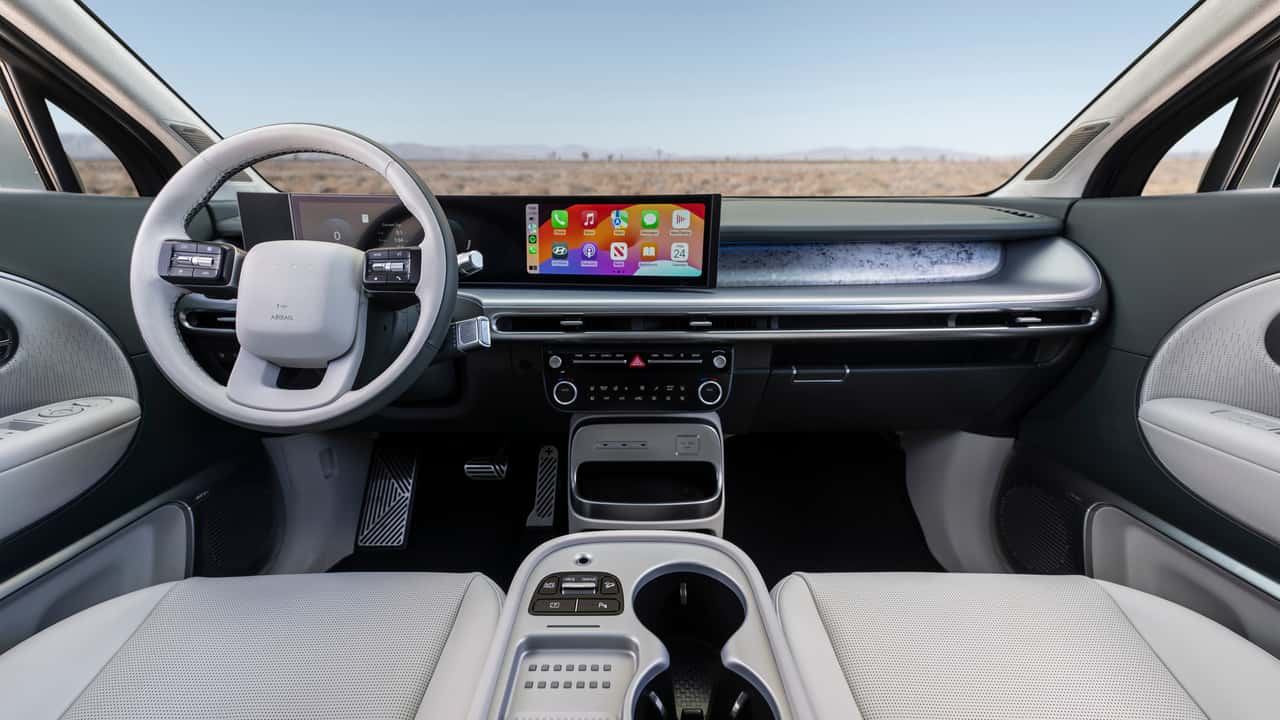
Photo by: Hyundai
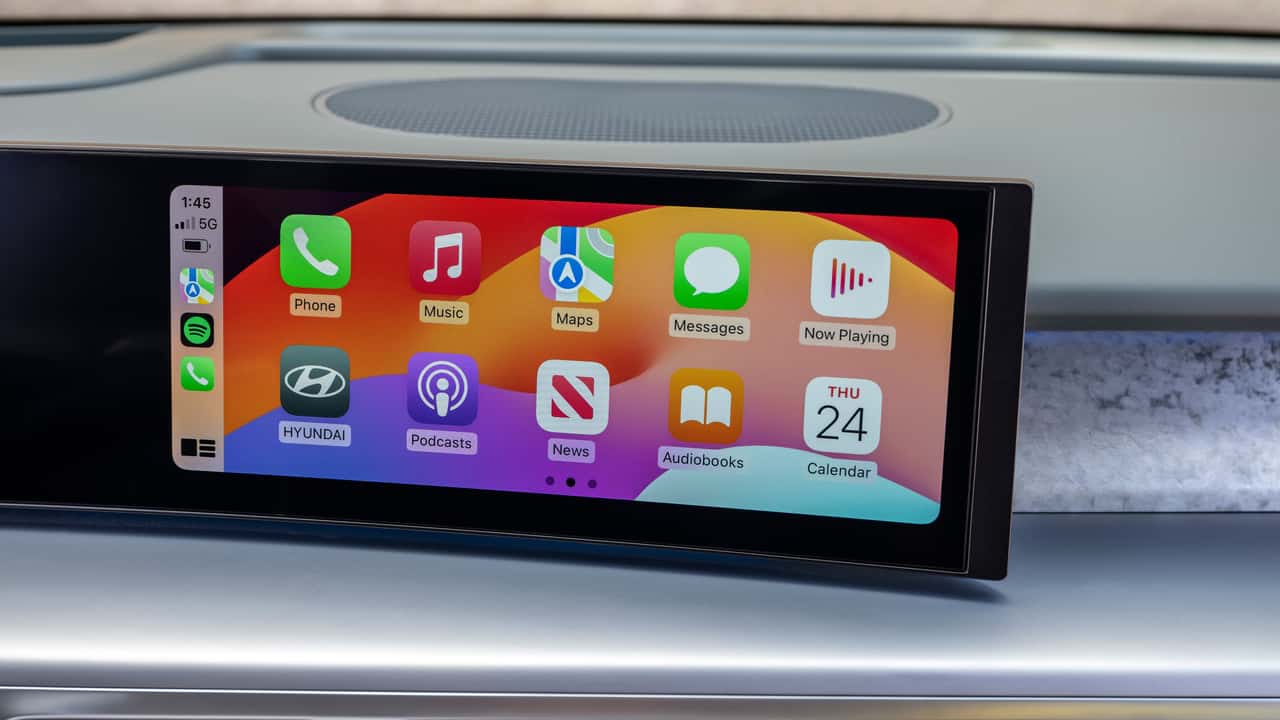
Photo by: Hyundai
The best stuff is what you don’t see. Acoustic laminated glass is standard for the first- and second-row windows, as is active noise cancellation throughout the entire cabin. At 70 miles per hour on the highway, the Ioniq 9 is whisper quiet—even wind buffeting common in other EVs is barely noticeable here.
With 335 miles of range standard on the base S model, the Ioniq 9 outpaces many electric SUVs in this respect. Even when moving up to the dual-motor Calligraphy trim, 311 miles of range is nothing to sneeze at. And that pairs with a whopping 422 horsepower.
Best of all, the Ioniq 9 is North American Charging Standard (NACS) capable out of the box. That means you can plug into any Tesla Supercharger station and go from 10 to 80 percent in just 24 minutes.
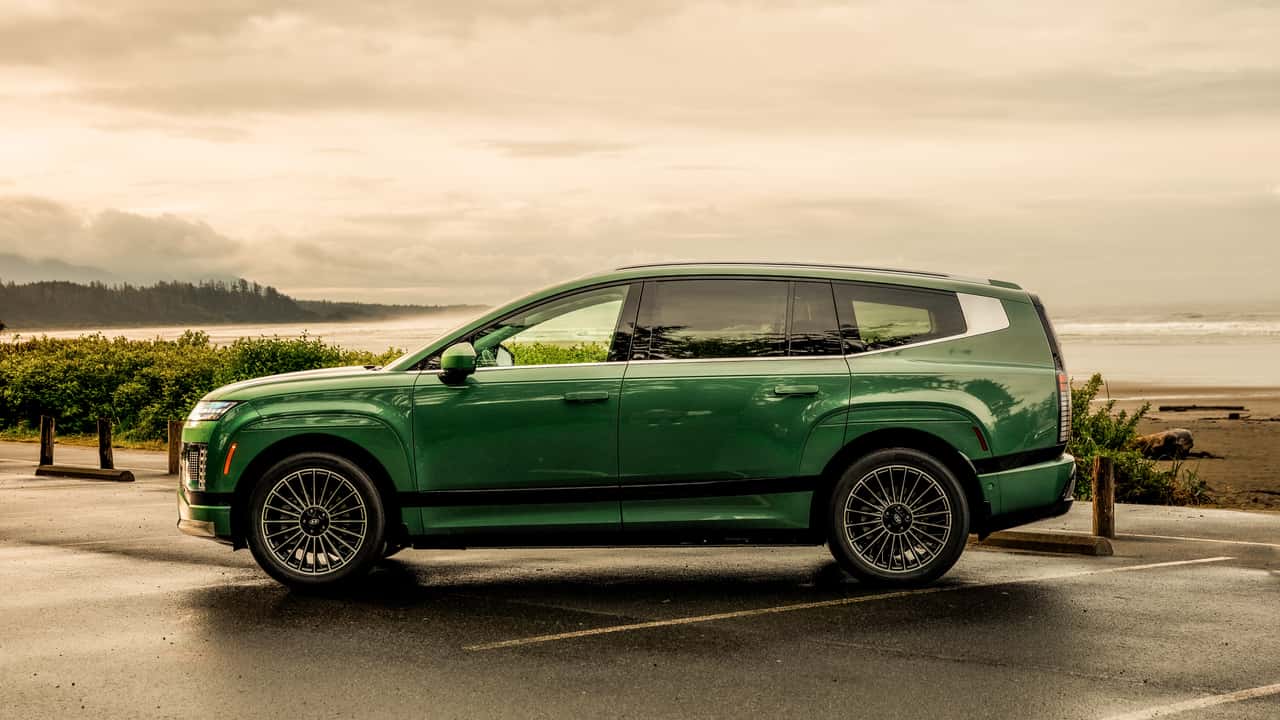
Photo by: Hyundai Canada
Hyundai Ioniq 9 Cons
Design Isn’t For Everyone
Certain Trims Are Pricey
For as big a fan as I am of the Ioniq 9’s design, I can see where others might not be. Hard edges, flat surfaces, and a very tall rump make Hyundai’s electric three-row less conventionally attractive than its rivals at Rivian, Cadillac, and Kia. In fact, the Ioniq 9’s proportions more closely resemble a Tesla Model X—which isn’t exactly a looker.
Certain elements of the interior may be equally controversial. The silver trim pieces that run across the dash and dot the door panels may look cheap to some (even though they certainly don’t feel it). The flat, minimalist surfacing on the dash may also come off as budget-minded.
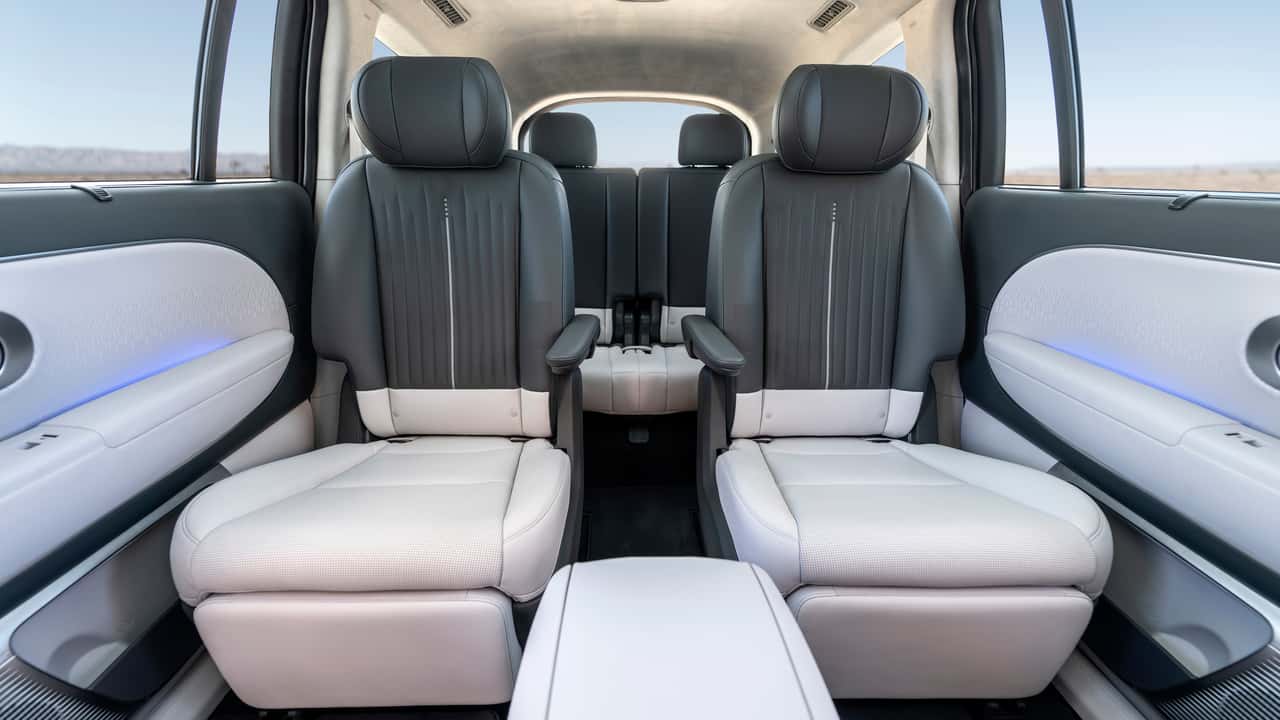
Photo by: Hyundai
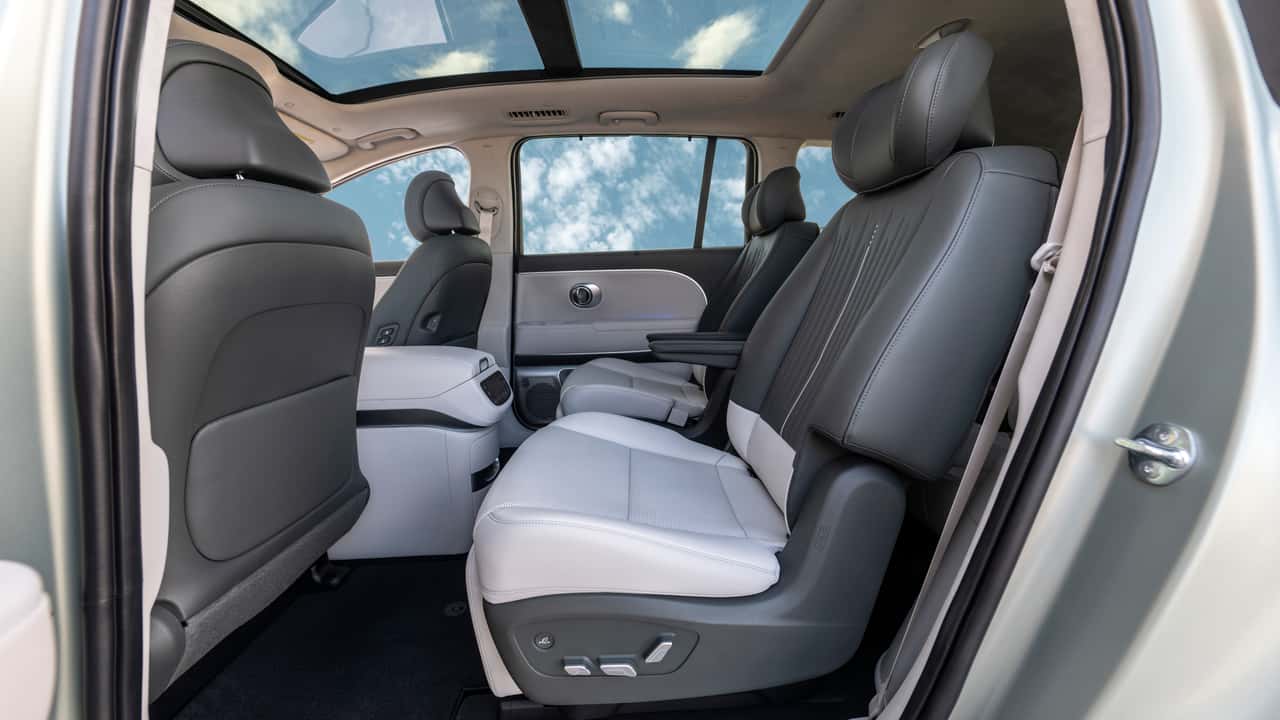
Photo by: Hyundai
If customers don’t want those trim pieces in an SUV that starts at $60,000, they certainly won’t want them higher up in the Ioniq 9’s range—which can get pretty pricey. The SE is $64,365, the SEL is $67,920, the Limited is $72,850, the Calligraphy tested here is $76,590, and the fully loaded Calligraphy Design is $79,090.
Thankfully, once you’re that high up in the Ioniq 9’s range, there aren’t many options to choose from beyond paint. Everything else is standard, which is nice. Still, a near-$80,000 price tag for a fully loaded Hyundai might rub some people the wrong way.
Hyundai Ioniq 9 Verdict: It’s hard to find fault with the Hyundai Ioniq 9. Sure, the design might be a little wonky, and the price tag can be daunting once you start creeping up into the trim line. But in the realm of mainstream, three-row, electric SUVs, few do it better than Hyundai.
Competitors
Cadillac Escalade IQ
Kia EV9
Rivian R1S
Tesla Model X
The 2025 Porsche Taycan 4S Cross Turismo Is the Ultimate Daily: Review
The 2026 Kia EV4 Is a Better Tesla Model 3: Review
| 2025 Hyundai Ioniq 9 Calligraphy | |
| Motor | Permanent-Magnet Synchronous |
| Battery | 110.3 Kilowatt-Hours |
| Output | 422 Horsepower / 516 Pound-Feet |
| Drive Type | All-Wheel Drive |
| Speed 0-60 MPH | 4.9 Seconds |
| Weight | 6,034 Pounds |
| EV Range | 311 Miles |
| Charge Time | 10-80 Percent In 24 Minutes |
| Charge Type | DC Fast Charging / NACS Tesla Supercharging |
| Seating Capacity | 7 |
| Cargo Volume | 21.9 / 46.7 / 86.9 Cubic Feet |
| Base Price | $60,555 |
| As-Tested Price | $76,590 |
| On Sale | Now |
